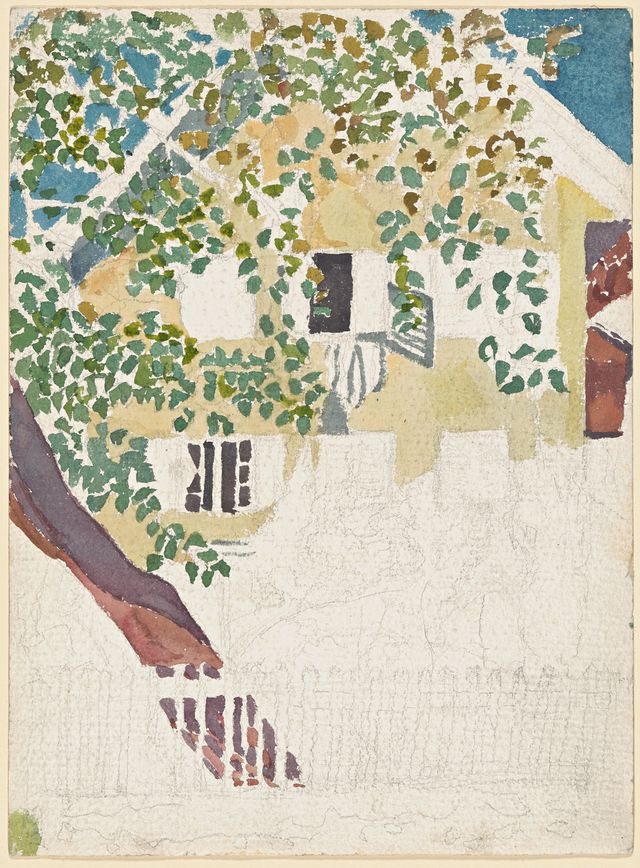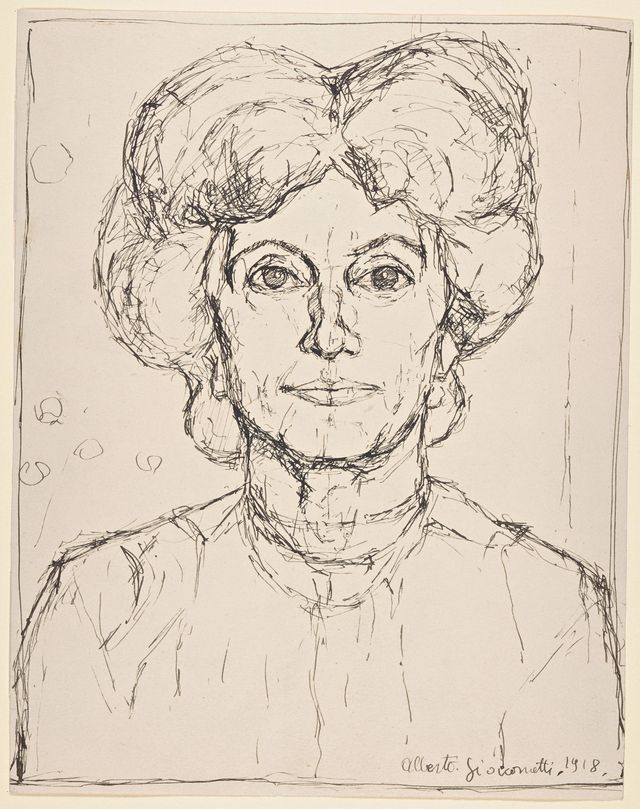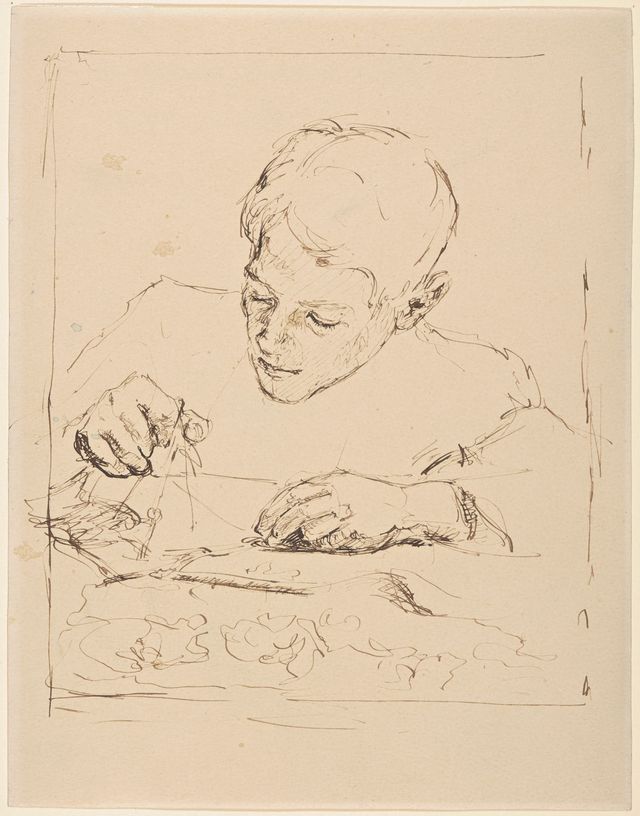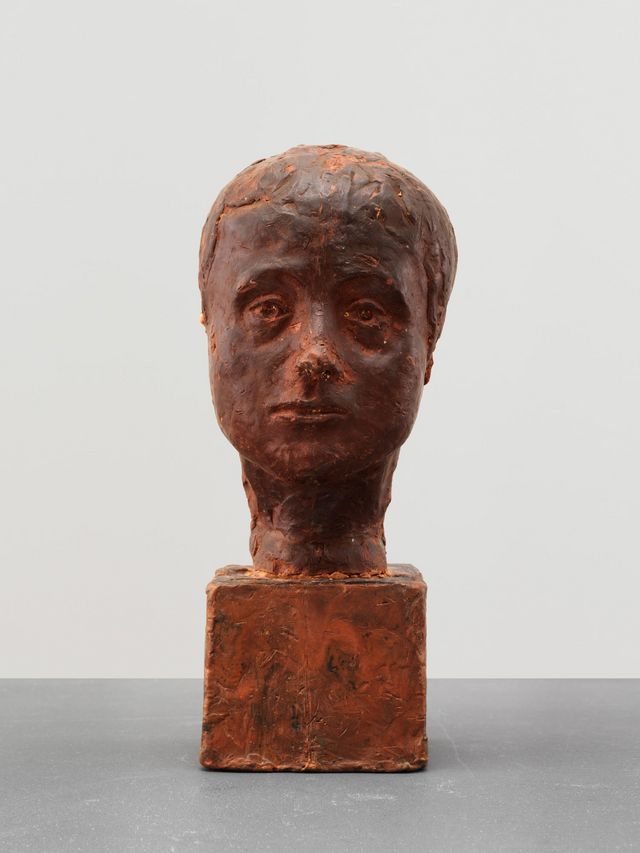
Childhood and Early Work
1901–1919
Alberto Giacometti, born in 1901 in Borgonovo near Stampa in the Swiss canton of Graubünden, is the first child of a well-known post-Impressionist painter, Giovanni Giacometti, and his wife Annetta. The boys’ father gives the young Alberto and his brother Diego free access, both to his studio and to all the materials they need to express their creativity. Alberto displays a natural talent for drawing; his earliest works were lead or coloured pencil drawings illustrating scenes from the Bible, but also include family portraits and landscapes of his native valley.

In 1914, he sculpts a portrait of Diego in Plasticine, the piece which remains the very first of the artist’s preserved sculptures (see GS 281). That autumn he begins attending the Evangelical Secondary School in Schiers where he is allocated a small room to use as a studio. He also sculpts portraits of his schoolmates, keeping some of these works for the rest of his life. He studies the works of Hodler, Cézanne and Gauguin from an early age, and continues to be taught by his father during the school holidays.
Pencil drawings in black-and-white and colour sent to his godfather Cuno Amiet have been preserved from nearly every year of Giacometti’s childhood, and meticulous copies of Old Masters attest to early, intensive study of his father’s art books.
In his father’s studio in 1915, Giacometti produces his first oil painting, a still life of apples on a folding table. In April 1919, he decides to leave Schiers without finishing school and returns to Stampa to work as an artist alongside his father. As of September 1919, he is in Geneva, where he lives for six months, frequenting the École des Beaux-Arts for a short while.


